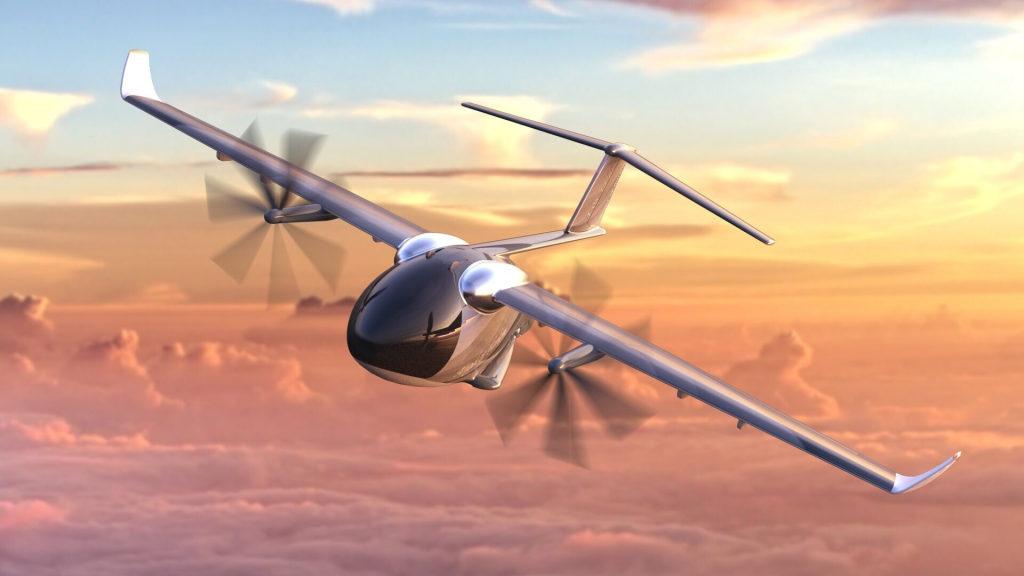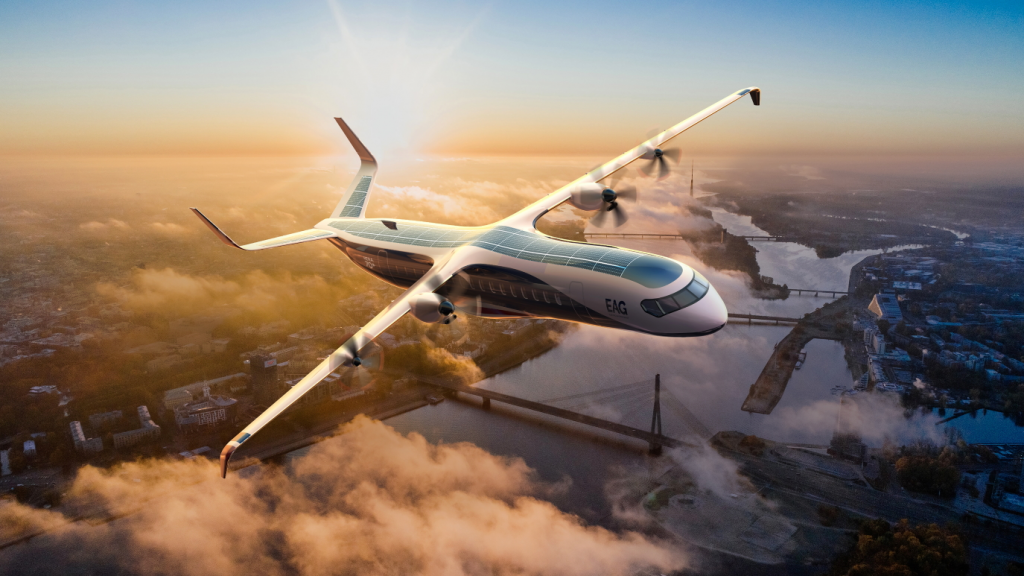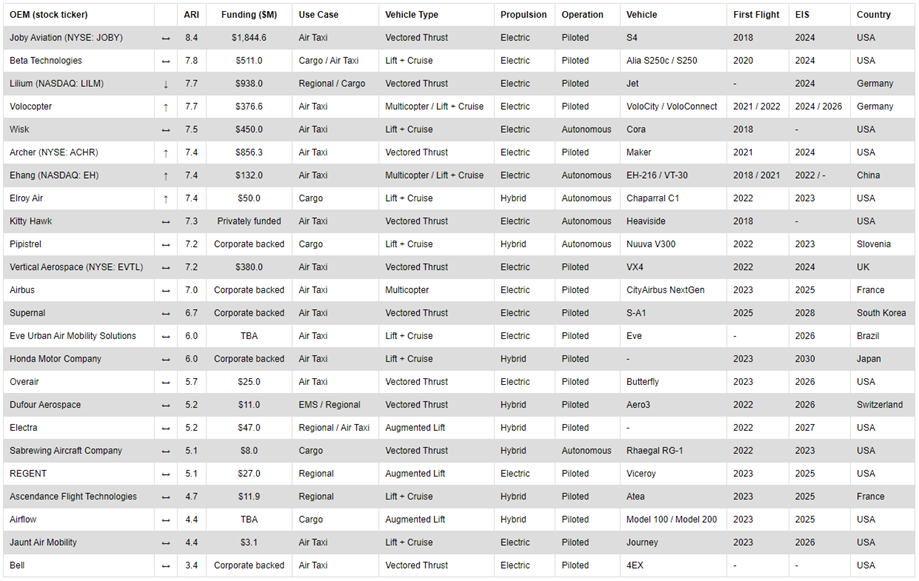Switch to:
 EN
EN  Português (PT)
Português (PT)  Español (ES)
Español (ES)
While it is likely that long-range travel will still be powered by combustion engines for the foreseeable future, there is great potential for short- and medium-range air travel to be performed by vehicles that are clean, safe, quiet, and have lower operating and maintenance costs.
What are the different types of electric aircraft emerging in the market? There are three types, recognized by their acronym: eVTOL, eSTOL and eCTOL. Next, we will provide an overview of their differences, scope, and main qualities.
eVTOL
Probably the best known of all, Vertical Takeoff and Landing (eVTOL) type aircraft have the ability to land and take off vertically, just like conventional helicopters, making them a suitable vehicle for urban environments with little room to maneuver. The diversity of designs separates the eVTOL from the other two types of aircraft, with fixed and rotary wing models, where four different types can currently be found.
The Multicopter type design is simple and efficient. It does not have wings, therefore its range is less and energy consumption is greater due to the need to compensate for this inefficiency.
The second design is the Lift & Cruise, which combines the Multicopter design for vertical takeoffs and landings, with a conventional aircraft during flight. The advantages of both architectures are maximized. However, one of the challenges is the noise emitted by the type of rotor used.
Other designs are called Tilt Wing and Tilt Rotor, which are capable of minimizing the impact of noise thanks to the use of multiple slow and open rotating propellers. The downside is the need to install heavier, high-torque electric motors, which can interfere somewhat with the overall design.
Also on the market is the Deducted Vector Thrust type. This design uses fan ducts on the same fixed wings, controlled by an electric motor for vertical and horizontal operation, using the Distributed Electric Propulsion (DEP) concept. This system is efficient and quieter, and appears to be leading the way in the latest generation eVTOL designs.
Finally, a design that stands out for its low noise levels is the so-called Slowed Rotor Compound, in which the main rotor of the aircraft is slowed down to produce less resistance with the air, which eliminates almost all of the noise emitted. It is common for these aircraft to have a main rotor and fixed wings, increasing safety and efficiency in vertical takeoffs and landings.
The leaders around this type of aircraft are several, among which Eve, Jaunt Air Mobility, Vertical Aerospace, Lilium, Joby, and eHang stand out. The number of actors speaks of the potential of this type of aircraft worldwide, and the role that each one would play in promoting urban air mobility once and for all, especially short-range.
eSTOL

The so-called Electric Short Take-Off and Landing (eSTOL) vehicles have as their main difference with eVTOLs their lower energy requirement to take off and land. Because they are fixed-wing, the engines are only used to push the aircraft forward, without affecting vertical takeoffs or landings. In other words, an eSTOL aircraft requires less energy to take off and land, and can also store more cargo than an eVTOL of similar size and weight.
Likewise, although eVTOLs do not require runways to take off or land (since like a conventional helicopter they can do it vertically), eSTOL models only require approximately 30-50 meters. As for its design, the latest technology is called Blown Lift Technology, which is an aerodynamic technique that “tricks” the wing into thinking that it is bigger than it really is, achieving takeoffs and landings in a few meters.
The leaders in eSTOL are Electra and Airflow, both with their own patented technology. Electra even recently acquired a NASA contract for the development of its Blown Lift Technology. For its part, Airflow also has its own technology called Electric Blown Wind Technology, following similar principles as its competitor, although venturing into larger aircraft with a focus on commercial operations.
eCTOL

Conventional Take-Off and Landing (eCTOL), are similar to eSTOL but different in their performance. Of conventional design, the eCTOL concept considers current aircraft, such as the well-known Cessna Grand Caravan or the de Havilland Canada DHC-2 hydroplane, powered entirely by electric motors. In a way, it’s a simpler proposition that doesn’t require new designs, with the challenge of creating engines efficient enough to convert current combustion-powered aircraft to electric ones.
The leading companies for this type of aircraft are MagniX and Ampaire. In fact, the aforementioned aircraft have been tested by MagniX, which is certainly in the lead in electrifying larger aircraft. Ampaire is following closely with testing the Cessna 337 and is investigating the process of converting the de Havilland Twin Otter into a hybrid-powered aircraft, referred to by the company as the Eco Otter SX. Several other aircraft manufacturers have announced their plans for the development of eCTOL aircraft. This includes Tecnam, Embraer, and Pipistrel.
Types of Energy/ Fuel
Aviation is changing and with it the expectations of its users. In addition to the need to establish green fuels in order to reduce carbon footprints, increasing efficiency, specifically in urban and short-haul travel, is the next step in the evolution of aviation worldwide.
Although there is no doubt that the technology is available today to electrify global aviation, there are still several pending challenges around its efficiency and storage. Batteries are heavy, and weight, in aviation, is critical. Today there are three options, two quite concrete, and one that seems like an eternal promise, still with potential, but with dilemmas regarding its large-scale application.
Electrical
This type of power requires aircraft batteries to be significantly charged and at the lowest possible weight for efficient operation. It is estimated that there is still at least a decade to reach a massive application mainly due to long charging times and the need to invest in charging stations. Electric aircraft will be a great option for short-distance urban trips. Currently, manufacturers of eVTOLs and eSTOLs count on a range of approximately 100 NM, or 40-50 minutes, when considering a 100% electric motor.
Hybrid
Today, this is the closest combination to “take off”. The main models use generators that feed on A1 jet fuel, in addition to having the possibility of operating the aircraft electrically. It is the best option at present due to its availability and existing infrastructure, and could serve as the first step towards the full electrification of aviation. It could be used as an option for those medium-range aircraft, where take-off and landing are used in the electric mode, and for cruise-type operation conventional fuel is used.
A conventional aircraft, like the Caravan, equipped with a hybrid engine could use its electric batteries for up to 1 hour, reducing fuel costs by at least 25%. In the future, as battery capacity increases, the current 100NM range may increase to 300NM, according to internal documents shared with us
Hydrogen
The eternal promise of the energy of the future will apparently have to keep waiting. In fact, in terms of car sales, where there is more information and data, the purchase of electric models exceeds 500 to 1 compared to the sale of hydrogen-powered cars. Hydrogen is still very expensive, with high operating costs and an unstable supply in the market. The same goes for future urban mobility aircraft. Likewise, there are doubts about how clean this type of energy can be and several dilemmas about its storage capacity.
Market launch
How close are these aircraft to penetrating current markets? SMG Consulting has created an index called the Advanced Air Mobility Index (ARI), which shows how close each player is to entering the market. In the infographic below, you can see several of the companies on display and how close they might be to going commercial, with Joby Aviation taking the lead.

The ARI is a rating tool, based on a proprietary formula that uses publicly available information as well as expert knowledge. It helps to assess industry participants’ progress toward delivering a certified product in large-scale production. While 14 companies are rated, the tool is regularly updated to include new entrants as well as any new information about existing entrants.
The ARI is based on five elements: the funding received by the company, the team that runs the company, the technological readiness of its vehicles, the certification progress of its vehicles, and the readiness of production for large-scale manufacturing.
Conclusion
At Flapper we believe that the future of air mobility is truly bright. That is why we have made various alliances with the main players in the world market, Eve, Electra Jaunt Air Mobility, and MagniX. We can contribute our grain of sand to promote a more sustainable, clean, and safe general aviation.
Likewise, we believe that Latin America has a lot of potential for the application, in the short term, of these technologies. Various urban centers in the region would greatly benefit from eVTOL, eSTOL, and even eCTOL type aircraft, such as São Paulo, Bogotá, and Santiago de Chile, with high population density and the need for efficient transportation within their urban radius.










